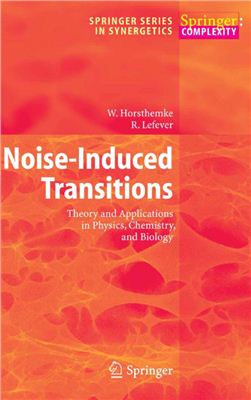Springer-Verlag Berlin, 2006, 318 pages
This classic text, an often-requested reprint, develops and explains the foundations of noise-induced processes. At its core is a self-contained, textbook-style presentation of the elements of probability theory, of the theory of Markovian diffusion processes and of the theory of stochastic differential equations, on which the modeling of fluctuating natural and artificial environments is based. Following an introduction to the mathematical tools, the occurrence and the properties of noise-induced transitions are then analyzed for rapidly fluctuating environments describable by the white-noise idealization. Subsequently, more realistic and general types of colored noises are considered. Appropriate practical methods for dealing with these situations are developed. The latter part of the book contains applications and experimental studies illustrating the many facets of noise-induced transitions. The following applications are considered in Noise-Induced Transitions: population dynamics, electrical circuits, chemical and photochemical reactions, non-linear optics, and hydrodynamical systems.
This classic text, an often-requested reprint, develops and explains the foundations of noise-induced processes. At its core is a self-contained, textbook-style presentation of the elements of probability theory, of the theory of Markovian diffusion processes and of the theory of stochastic differential equations, on which the modeling of fluctuating natural and artificial environments is based. Following an introduction to the mathematical tools, the occurrence and the properties of noise-induced transitions are then analyzed for rapidly fluctuating environments describable by the white-noise idealization. Subsequently, more realistic and general types of colored noises are considered. Appropriate practical methods for dealing with these situations are developed. The latter part of the book contains applications and experimental studies illustrating the many facets of noise-induced transitions. The following applications are considered in Noise-Induced Transitions: population dynamics, electrical circuits, chemical and photochemical reactions, non-linear optics, and hydrodynamical systems.

